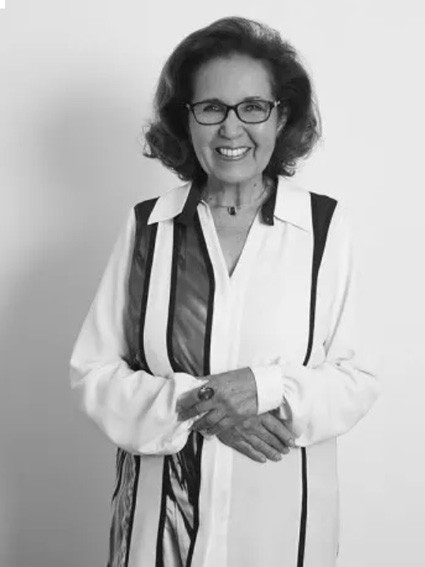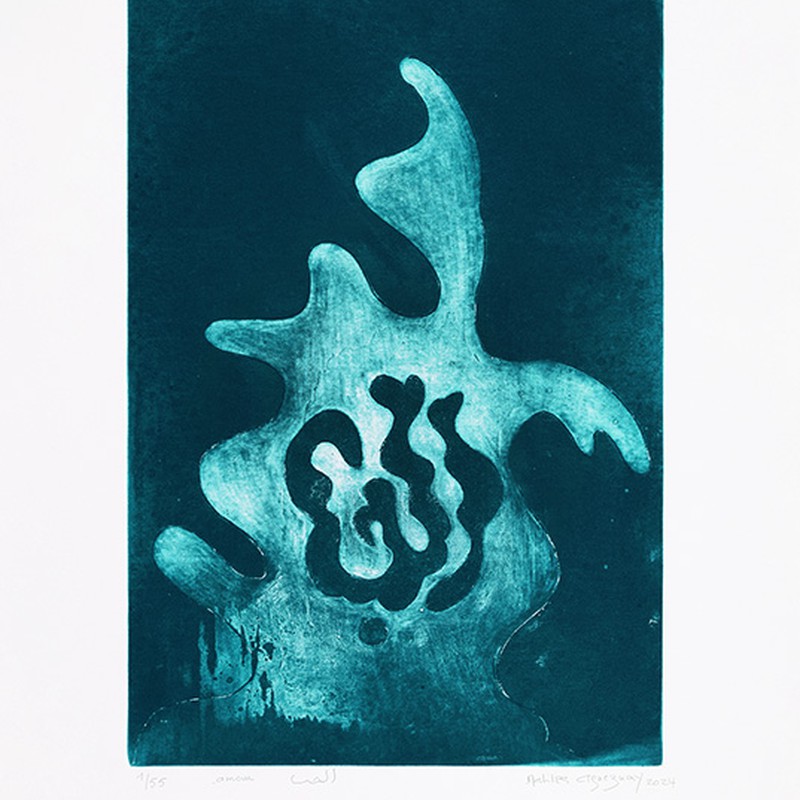
Malika Agueznay
Malika Agueznay is a pioneering artist in more ways than one. She was one of the first abstract modernist artists in Morocco. He participated in Moroccan modernity and contributed, alongside the leading figures of the Casablanca School, to the definition of its codes and forms.
In 1966, after initial training in science, Malika Agueznay enrolled at the Casablanca School of Fine Arts, then directed by Farid Belkahia. There, she interacted with the thinkers of Moroccan modernism, helping them to inscribe art in the political and social fields that would come define the movement. Together, they questioned contemporary painting and focused their work on the study of shapes, lines, geometry and pure color. Malika developed her own research that she would explore throughout her life in various media.
Throughout her career, she has elaborated on seaweed as a central motif in her abstract practice. This motif is both deliberately evocative of femininity and rooted in her own female perspective. Malika has incorporated the seaweed form in different ways, in effect, pulling it in different directions: as pure abstraction, as the foundation for calligraphic text, as part of a distinct plant formation, or as a specific evocation of the female body. She has also used it across mediums, placing it at the center of her multifaceted practice, which has extended from painting and sculpture, to intaglio.
It was through the experience of intaglio (engraving and etching), which she discovered in 1978 at Moussem d'Asilah, that Malika's work gained strength and freed herself from concerns about the legibility of form and content. As her friend, the anthropologist Bert Flint, points out, "Malika Agueznay is, without a doubt, the Moroccan artist of her generation who has taken research in this field the furthest." To perfect her technique, the artist, who was also a young mother, did not hesitate to go to New York, to the studios of renowned printmakers such as Mohamad Omar Khalil, Krishna Ready and Robert Blackburn. She completed her apprenticeship in Paris, at Atelier 17. Since then, faithful to the teachings of the Casablanca School, the artist returns to Asilah every year to direct the printmaking studio at the Moussen International Art Festival.
‘Being an engraver allows the painter that I am to duplicate myself and achieve everything that I can't do in painting. And yet my painting and my engraving are held by the hand, I can feel it.’ Malika Agueznay
